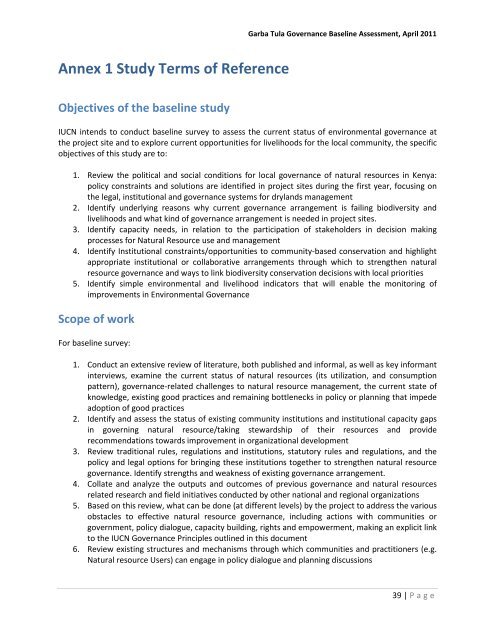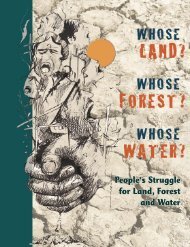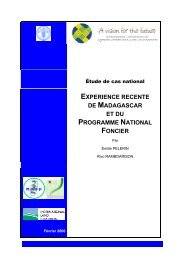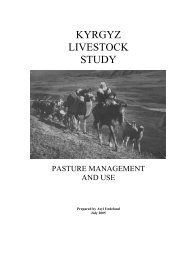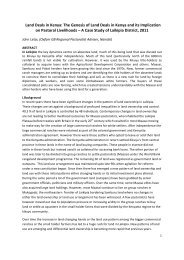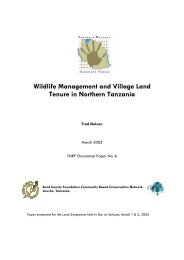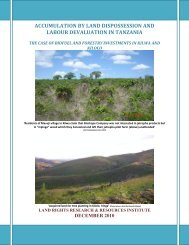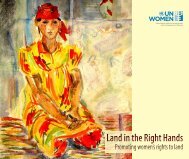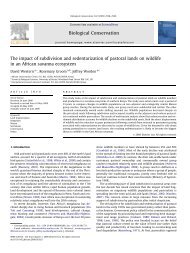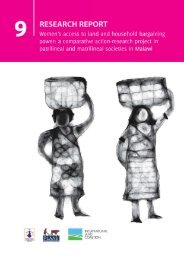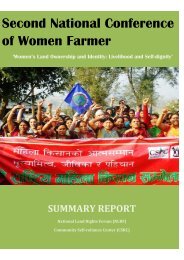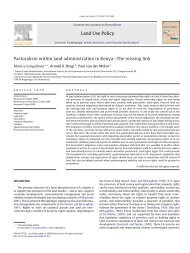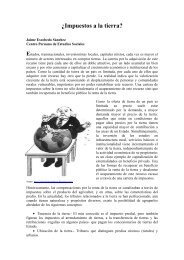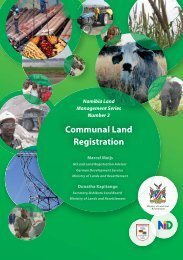Garba Tula Governance Assessment Final Report ... - Land Portal
Garba Tula Governance Assessment Final Report ... - Land Portal
Garba Tula Governance Assessment Final Report ... - Land Portal
Create successful ePaper yourself
Turn your PDF publications into a flip-book with our unique Google optimized e-Paper software.
Annex 1 Study Terms of Reference<br />
Objectives of the baseline study<br />
<strong>Garba</strong> <strong>Tula</strong> <strong>Governance</strong> Baseline <strong>Assessment</strong>, April 2011<br />
IUCN intends to conduct baseline survey to assess the current status of environmental governance at<br />
the project site and to explore current opportunities for livelihoods for the local community, the specific<br />
objectives of this study are to:<br />
1. Review the political and social conditions for local governance of natural resources in Kenya:<br />
policy constraints and solutions are identified in project sites during the first year, focusing on<br />
the legal, institutional and governance systems for drylands management<br />
2. Identify underlying reasons why current governance arrangement is failing biodiversity and<br />
livelihoods and what kind of governance arrangement is needed in project sites.<br />
3. Identify capacity needs, in relation to the participation of stakeholders in decision making<br />
processes for Natural Resource use and management<br />
4. Identify Institutional constraints/opportunities to community-based conservation and highlight<br />
appropriate institutional or collaborative arrangements through which to strengthen natural<br />
resource governance and ways to link biodiversity conservation decisions with local priorities<br />
5. Identify simple environmental and livelihood indicators that will enable the monitoring of<br />
improvements in Environmental <strong>Governance</strong><br />
Scope of work<br />
For baseline survey:<br />
1. Conduct an extensive review of literature, both published and informal, as well as key informant<br />
interviews, examine the current status of natural resources (its utilization, and consumption<br />
pattern), governance-related challenges to natural resource management, the current state of<br />
knowledge, existing good practices and remaining bottlenecks in policy or planning that impede<br />
adoption of good practices<br />
2. Identify and assess the status of existing community institutions and institutional capacity gaps<br />
in governing natural resource/taking stewardship of their resources and provide<br />
recommendations towards improvement in organizational development<br />
3. Review traditional rules, regulations and institutions, statutory rules and regulations, and the<br />
policy and legal options for bringing these institutions together to strengthen natural resource<br />
governance. Identify strengths and weakness of existing governance arrangement.<br />
4. Collate and analyze the outputs and outcomes of previous governance and natural resources<br />
related research and field initiatives conducted by other national and regional organizations<br />
5. Based on this review, what can be done (at different levels) by the project to address the various<br />
obstacles to effective natural resource governance, including actions with communities or<br />
government, policy dialogue, capacity building, rights and empowerment, making an explicit link<br />
to the IUCN <strong>Governance</strong> Principles outlined in this document<br />
6. Review existing structures and mechanisms through which communities and practitioners (e.g.<br />
Natural resource Users) can engage in policy dialogue and planning discussions<br />
39 | P a g e


